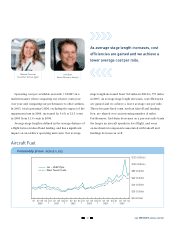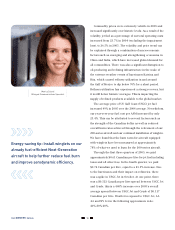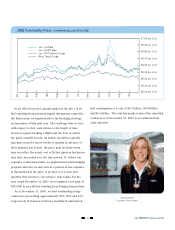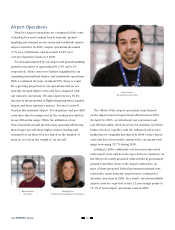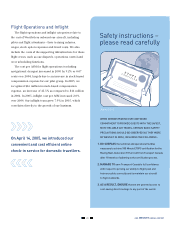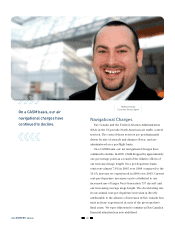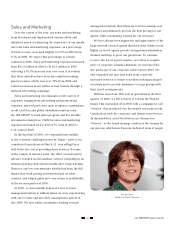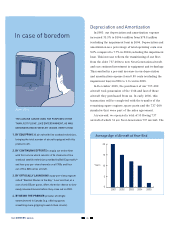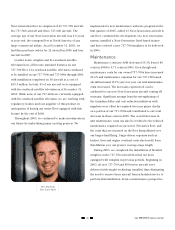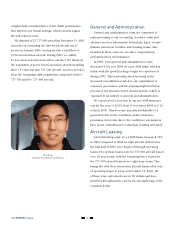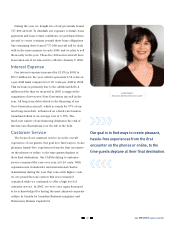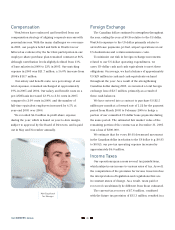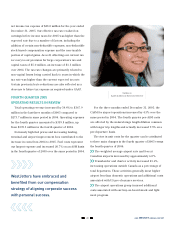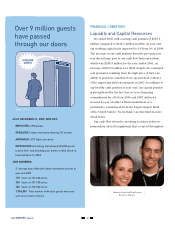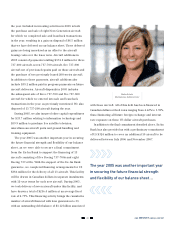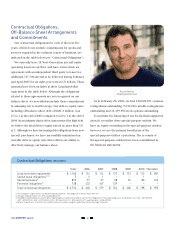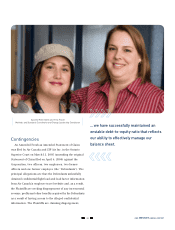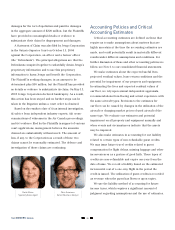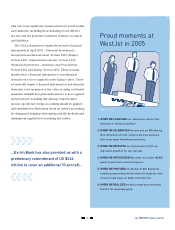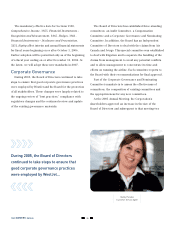Westjet 2005 Annual Report Download - page 28
Download and view the complete annual report
Please find page 28 of the 2005 Westjet annual report below. You can navigate through the pages in the report by either clicking on the pages listed below, or by using the keyword search tool below to find specific information within the annual report.
26
YOUR OWNERS’ MANUAL
winglets help aircraft achieve better climb performance
that allows lower thrust settings, which extends engine
life and reduces costs.
We disposed of 13 737-200 aircraft by December 31, 2005
and took our remaining five 200-series aircraft out of
service in January 2006, leaving us with a total fleet of
51 Next-Generation aircraft. During 2005, we added
15 new Next-Generation aircraft to our fleet. We financed
the acquisition of seven Next-Generation aircraft including
three 737-600 and four 737-700 aircraft, and we elected to
lease the remaining eight acquisitions comprised of three
737-700 and five 737-800 aircraft.
General and Administration
General and administrative costs are comprised of
costs pertaining to our accounting, treasury, audit and
advisory services, information technology, legal, “people”
(human resources), facilities and training teams. Also
included in these costs are executive compensation,
professional fees and insurance.
In 2005, total general and administrative costs
decreased 4.4% over 2004 on a per-ASM basis, which is
in line with the growth in stage length we experienced
during 2005. This is pleasing when factoring in the
increased expenditures related to our commitment to
corporate governance and the ongoing implementation
process of our internal control documentation, which is
expensed in its entirety to general and administration.
We experienced a decrease in our per-ASM insurance
cost for the year of 25.0% from 0.16 cents in 2004 to 0.12
cents in 2005. This decrease is partly attributable to a
general decline in the worldwide airline insurance
premiums, but is also due to the confidence our insurers
have in our commitment to technology, training and safety.
Aircraft Leasing
Aircraft leasing costs, on a CASM basis, increased 35%
in 2005 compared to 2004 as eight aircraft delivered in
the first half of 2005 were financed through operating
leases. Five of these leases were for 737-800 aircraft leased
over 10-year terms, with the remaining three leases for
the 737-700 aircraft leased over eight-year terms. This
brings the total Next-Generation aircraft financed by way
of operating leases to 18 as at December 31, 2005. All
of these lease agreements are in US dollars and have
benefited throughout the year by the strengthening of the
Canadian dollar.
Nick Kang
Schedule Distribution Coordinator



